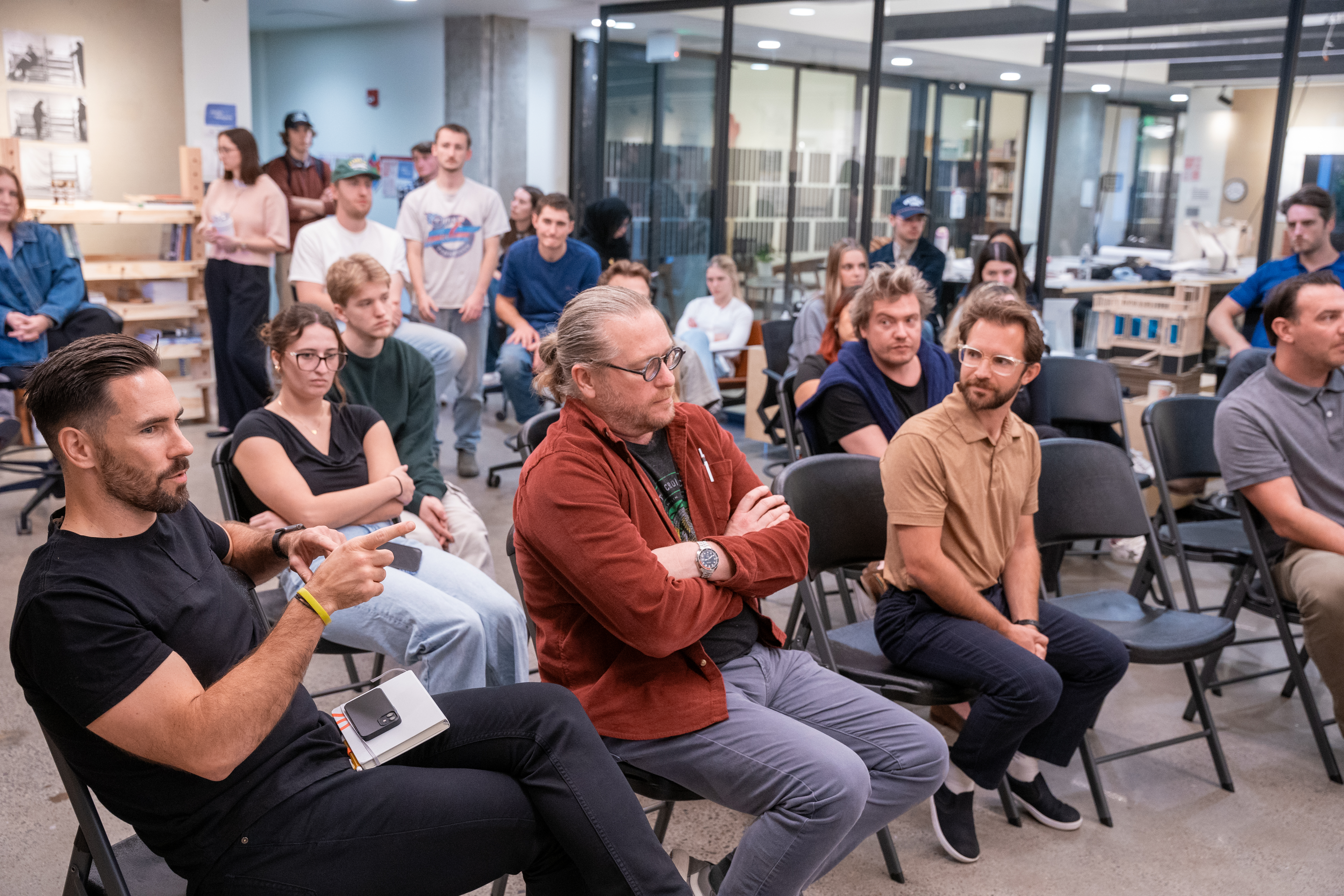At its core, architecture is about formation. As Winston Churchill once said, “We shape our buildings and afterwards, our buildings shape us.” For teachers—especially of architecture—that sentence names a promise and a responsibility: to shape students who will, in turn, shape cities and communities. Teaching architecture means schooling the eye, the hand and the heart; it means training students toward technical mastery while cultivating the habits and virtues that sustain a lifetime of work.
The Art of Teaching

One of the first faculty members in Belmont’s O’More College of Architecture and Design, Anthony Monica embraces this mandate. With an eye for meticulous craftsmanship and student needs, Monica has helped define the program’s ethos. His teaching blends rigor with generosity, insisting that design education must shape the whole person.
Like many architects, Monica’s story begins with Lego. He loved building and imagining new worlds long before seeing architecture as a vocation. In seventh grade, a career aptitude test delivered a surprising pair of results: “Number one was school bus driver. Number two was architect,” he recalls.
He completed undergraduate and graduate studies at Virginia Tech and began as an architect in Washington, D.C., eventually moving to Philadelphia, where he realized he wanted to teach while practicing. Belmont’s job posting met every desire: teach, build a program from the ground up and bring his faith into conversation with his craft. “Faith is not a common conversation in architecture,” he says. “At Belmont, two spheres of my world that had been separate could come together.”
Rethinking Architecture Education
Architecture education is known for its rigor. “Students always work hard,” Monica says. “Learning architecture is a slow process.” This can sometimes foster intense competition that can become unhealthy.
At Belmont, Monica has embraced the chance to think differently. “We want to flip the script by combining design excellence with love. How can we help students pursue excellence while cultivating a culture that brings light into dark places?”
The shift begins with a simple distinction: “We are not critical of our students. We are critical of the work.” The studio becomes a space for craft, collaboration and inquiry rather than judgment. “If we care about transforming cities and how people live, our path to get there matters. Students pursue excellence with humility, contributing to a shared culture we’re creating together.”
To Be a Christian Architect
He frames it through three lenses: the impact on the architect, on creation and on others. “For Christian architects, the design process is formative. Even while we know our buildings will never match nature’s perfection, there is something sacred in the trying. If I’m intentional in my process, I’m, in my own imperfect way, walking in the footsteps of my Father who created all things perfectly.”
This conviction shapes everything from folding paper to teaching first-year students. “If our process is an offering, how we carry ourselves matters. Showing up on time, speaking clearly about our work, drawing intentionally—it all matters.”
Learning from Others
For Monica, architecture begins with creation itself. “If we believe nature is God’s perfect creation, then no matter how hard we try, our buildings will never match its beauty. Yet to build anything, we must alter that creation. So why do we build at all?”

Participation in Belmont’s interdisciplinary reading group, where faculty members read and discussed texts like Rowan Williams’ Passions of the Soul, deepened this commitment. “It gave me vocabulary for my wrestling,” he says. More importantly, it modeled what it means to invest in character formation. “It’s easy to say, ‘We care about character.’ It’s another thing to put resources into imbuing character formation into every aspect of campus life.”
Engaging colleagues across disciplines also shaped his teaching. “Hearing what other people do in their classrooms refined how I think about forming my students.”
Buildings and Memory
When he imagines the future of architecture education at Belmont, he often turns to these words of John Ruskin: “When we build, let us think that we build forever. Let it not be for present delight nor for present use alone. Let it be such work as our descendants will thank us for…”
Buildings, Monica believes, should participate in time, not resist it. Natural materials—like the stone stoops of old Philadelphia rowhomes, worn down by centuries of footsteps—carry memory. “Materials that change over time remind us that we are part of a larger story.”
Sustainable architecture, then, is both environmental and cultural: a gift for the next generation.
Forming Citizen Architects
How does he pass these convictions on? By working side-by-side with students. “I’m not the owner of knowledge,” he says. “We are colleagues, and I’m going to sit beside you to help make this thing beautiful.”
They talk about culture, about excellence, about character. They celebrate curiosity. They value process and product.
Ultimately, his hope is simple: to form citizen architects—people who design with excellence, integrity and love, shaping spaces that reflect both God’s creation and human dignity.
In short: architects who build well and build forever.
Learn More
Learn more about the architecture program at Belmont.

